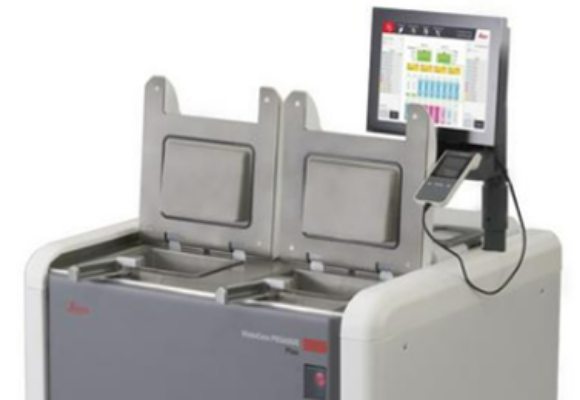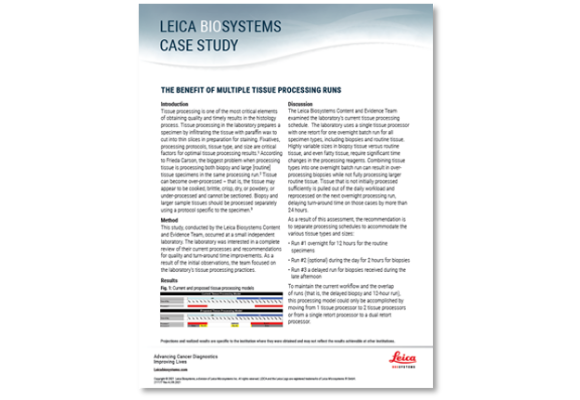Introducing the compact dual-retort tissue processor
Give every tissue type and size the treatment it deserves. Establish a workflow that meets the demands of your laboratory without compromises on tissue quality. The HistoCore PEGASUS Plus tissue processor enables you to run multiple protocols in parallel on a single instrument, ensuring optimal conditions for all tissue types without slowing down your laboratory.
HistoCore PEGASUS Plus
Learn how to increase your tissue processing capacity up to 33%
Our privacy promise: your email will never be shared.
I authorize Leica Biosystems to contact me for the purposes selected. I understand that I may be contacted by a phone call, text message and/or email. By clicking the Submit button and proceeding I confirm that I have reviewed and agree with the Terms of Use and the Leica Biosystems Privacy Policy. I also understand my privacy choices as they pertain to my personal data as provided in the Leica Biosystems Privacy Policy
Technological innovation increases single instrument processing capacity
For the first time, our world-renowned dual-retort technology will be available to medium-sized laboratories, enabling them to optimise histopathology workflows. Mid-sized laboratories will now be able to run multiple protocols in parallel on a single instrument, providing a solution that adapts to their workflow needs, and reduces unnecessary hands-on time. The dual retorts on HistoCore PEGASUS Plus increase capacity by up to 33% compared to a typical 300-cassette single-retort tissue processor.
DOWNLOAD BROCHURE
The benefit of multiple tissue processing runs
According to Freida Carson#, the biggest problem when processing tissue is processing both biopsy and large [routine] tissue specimens in the same processing run.1 Tissue can become over-processed – that is, the tissue may appear to be cooked, brittle, crisp, dry, or powdery, or under-processed and cannot be sectioned. Biopsy and larger sample tissues should be processed separately using a protocol specific to the specimen.2
Learn how dual-retort technology helped one lab optimise their tissue processing workflow.
DOWNLOAD CASE STUDY1 Carson, Freida L.; Histologic Fixation and Sample Processing; https://webapps.cap.org/apps/docs/store/PUB123_Histologic_Sample.pdf; 2015.
2 Bancroft’s Theory and Practice of Histological Techniques: Expert Consult
...https://books.google.com/books?hl=en&lr=&id=FoOn7il3yqcC&oi=fnd&pg=P
A105&dq=best+clinical+practices+for+tissue+processing&ots=r0XVsnlBtv&sig=pA5WbFh5tNHaeTfNvlJ9xg8Nxg#v=onepage&q=best%20clinical%20practices%20for%20tissue%20processing&f=false
*For Invitro Diagnostic Use.
# Died 11 January 2022.
